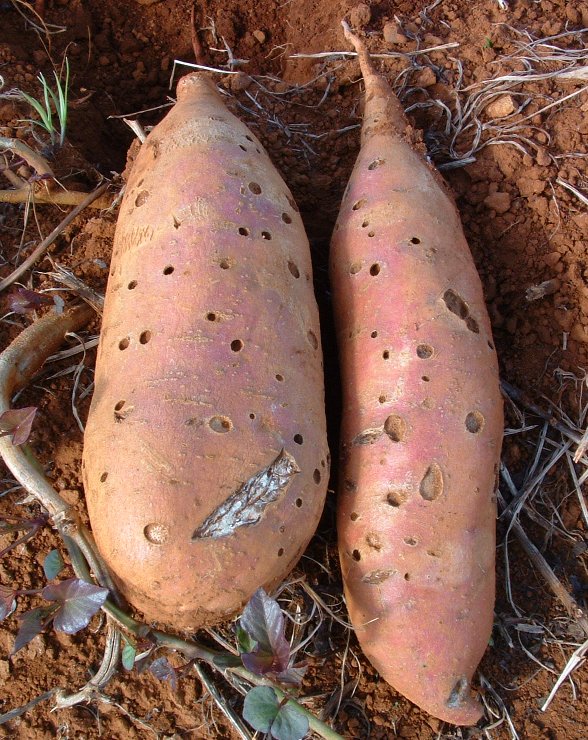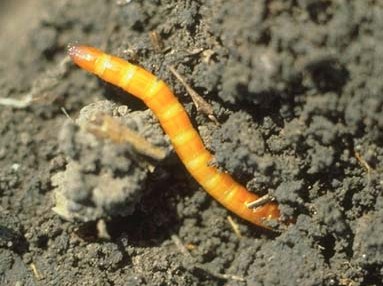|

Wireworm damage produces shallow round to irregular scars
on storage roots
(E. Coleman).

A wireworm (Conderus sp.) (Texas T&M University).
|
Diagnostic
summary
- larvae live in the soil and eat
shallow cavities in storage
roots.
- larvae are often not present
in damaged storage roots at harvest and are rare in soil samples.
- other beetle larvae, including
cucumber beetles Diabrotica spp. and flea beetles Systena
spp., can cause similar damage.
- damage tends to be in patches in the
field.
|
Taxonomy
Economic
importance
Geographical
distribution
Damage
Morphology
Biology
and ecology
Host Range
Detection
and inspection
Management
References
View full fact sheet
|

